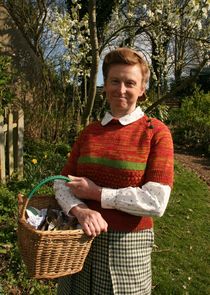Gregg Wallace is in France at an enormous foundry that produces a cast iron pot every five seconds. He follows production of casserole dishes from the arrival of 20 tonnes of crude iron right through to brightly coloured orange pots. Along the way, Gregg tests his mettle by taking a sample of molten iron at 1,550 degrees Celsius. With only a heatproof visor and gloves as protection, he dips a ladle into a bubbling cauldron and pours the white-hot sample into a tiny mould. He also discovers that the coloured enamel they protect their pots with is made from glass.
Meanwhile, Cherry Healey is in South Africa visiting one of the largest iron ore mines in the world. Nine miles long by three miles wide, it produces a staggering 670,000 tonnes every day. Cherry rides in one of the biggest dumper trucks in the world. Seven metres tall and packing 2,500 horsepower, it collects 65 tonnes of freshly mined rock and dumps it in to a processing plant. Days later, the iron ore is taken away from the mine in a two-mile-long train. And Cherry is rooting out the science behind cooking the perfect casserole. It turns out that when it comes to cooking time, longer isn't always better.
Historian Ruth Goodman takes a journey through time, learning how one-pot cooking evolved. From communal ovens during the industrial revolution through to 1970s slow cookers, technology influenced how people prepared simple meals. Ruth also visits the birthplace of the industrial revolution in Shropshire to discover how casting iron in sand moulds democratised our kitchens by producing affordable cookware.







No comments yet. Be the first!